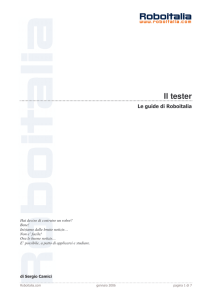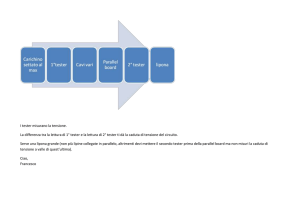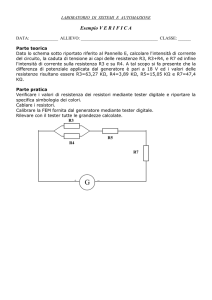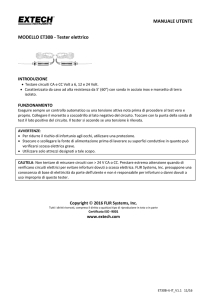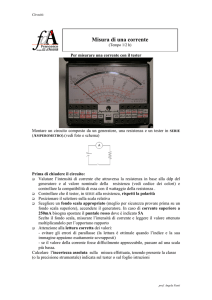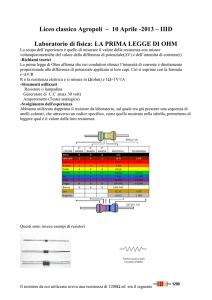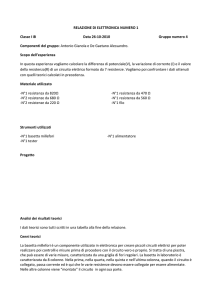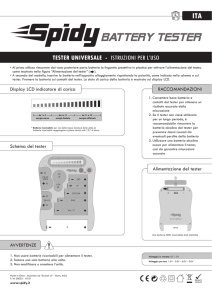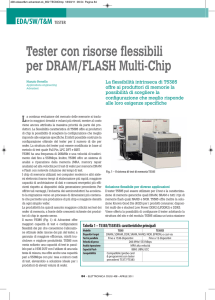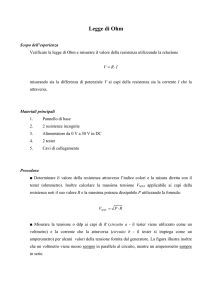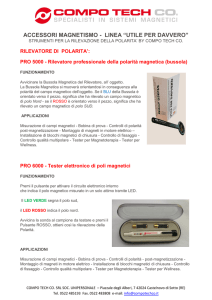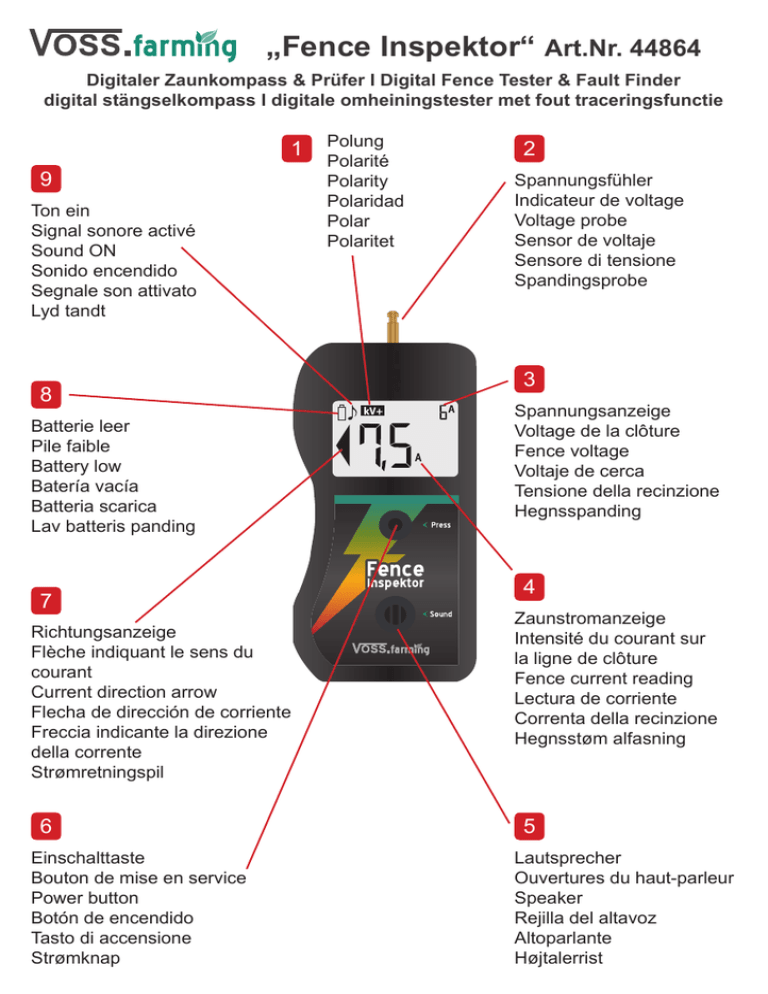
„Fence Inspektor“ Art.Nr. 44864
Digitaler Zaunkompass & Prüfer I Digital Fence Tester & Fault Finder
digital stängselkompass I digitale omheiningstester met fout traceringsfunctie
1
9
Ton ein
Signal sonore activé
Sound ON
Sonido encendido
Segnale son attivato
Lyd tandt
8
Batterie leer
Pile faible
Battery low
Batería vacía
Batteria scarica
Lav batteris panding
7
Richtungsanzeige
Flèche indiquant le sens du
courant
Current direction arrow
Flecha de dirección de corriente
Freccia indicante la direzione
della corrente
Strømretningspil
6
Einschalttaste
Bouton de mise en service
Power button
Botón de encendido
Tasto di accensione
Strømknap
Polung
Polarité
Polarity
Polaridad
Polar
Polaritet
2
Spannungsfühler
Indicateur de voltage
Voltage probe
Sensor de voltaje
Sensore di tensione
Spandingsprobe
3
Spannungsanzeige
Voltage de la clôture
Fence voltage
Voltaje de cerca
Tensione della recinzione
Hegnsspanding
4
Zaunstromanzeige
Intensité du courant sur
la ligne de clôture
Fence current reading
Lectura de corriente
Correnta della recinzione
Hegnsstøm alfasning
5
Lautsprecher
Ouvertures du haut-parleur
Speaker
Rejilla del altavoz
Altoparlante
Højtalerrist
Erste Konfiguration:
Der TESTER muss auf den Impuls des jeweiligen Weidezaungerätes eingestellt
werden (positiver kV+ oder negativer kV- Impuls, Symbol (1) wird im Display
angezeigt).
DE
1. Gehen Sie zur Anschlussstelle der Zaunzuleitung vom Elektrozaungerät.
2. Halten Sie den TESTER an eine blanke Stelle und drücken Sie die Taste (6).
3. Zeigt der Pfeil (7) vom Elektrozaungerät weg, ist der Tester richtig eingestellt.
Sollte der Pfeil zum Elektrozaungerät zeigen, muss der TESTER umgestellt werden,
d.h.:
1. Entfernen sie sich vom Zaun, damit der TESTER keine Impulse mehr messen kann.
2. Drücken Sie die Taste (6), nach 10 Sekunden gibt der TESTER einen Ton
ab - halten Sie die Taste (6) weiter gedrückt - nach 5 Sekunden ertönt ein
weiterer Ton - die Anzeige springt von kV- auf kV+ oder anders herum.
Funktionsweise:
Strom sucht sich den Weg des geringsten Widerstandes. Gibt es im Zaun einen
Kurzschluss, fließt mehr Strom (z.B. Grasbewuchs)
Finden Sie mit Hilfe des TESTERS heraus, wo der Strom abfließt, und entdecken Sie
die „undichten Stellen“ in ihrer Zaunanlage. Werden die undichten Stellen beseitigt,
steigt die Spannung im Zaun und somit seine Schlagkraft.
Das Display:
Ein Pfeil zeigt in die Richtung von „undichten Stellen“ (>4 Ampere).
(bei höherem Bewuchs zeigt der Strom an)
Rechts oben im Display wird kurz der Stromwert angezeigt, bevor die Zaunspannung
erscheint.
Ton:
Wenn der Ton eingeschaltet ist, piepst der TESTER bei jedem Zaunimpuls.
Ein- bzw. Ausschalten der akustischen Stromanzeige:
1. Entfernen Sie den TESTER vom Zaun, bis kein Impuls mehr angezeigt wird.
2. Halten Sie die Taste (6) gedrückt. Nach 10 Sekunden ertönt ein Ton. Lassen Sie jetzt
die Taste (6) los.
Der Ton ist deaktiviert bzw. aktiviert.
Batterie:
Blinkt das Batteriesymbol auf, muss die 9V-Batterie ausgetauscht werden.
Die Batterie wird durch Öffnen des Gehäuses getauscht.
Zum Betrieb des TESTERS benötigen sie eine 9V-Blockbatterie.
Anwendung des TESTERS am Zaun:
• beginnen Sie in der Nähe der Anschlussstelle des Elektrozaungerätes
• prüfen Sie mit dem TESTER die Zaunanlage
•
•
wiederholen sie die Prüfung ca. alle 50 m. (Folgen Sie dem aufblickenden Pfeil)
Nimmt die angezeigte Stromstärke langsam ab, bewegen Sie sich auf eine „undichte
Stelle“ im Zaun zu.
ist die Stromstärke bei nächsten Prüfschritt wesentlich kleiner, sind Sie an der
„undichten Stelle“ vorbeigegangen.
Außergewöhnlich hohe Stromstärken deuten auf einen Kurzschluss in der
Zaunanlage hin, wobei niedrige eher auf einen schlechten Kontakt hinweisen bzw.
eine Bruchstelle bei langen Zäunen.
Bei mehrmaliger Anwendung des TESTERS bekommen sie ein Gefühl für Ihre
gesamte Zaunanlage!
min. 5 m
ca. 50 m
CHECK
Configuration initiale:
FR
Le TESTEUR doit être réglé sur l‘impulsion de l‘appareil pour clôture en présence
(impulsion positive kV+ ou négative kV- , le symbole (1) apparaît à l‘écran).
1. Rendez-vous au point de raccordement de la conduite de clôture de l‘appareil pour
clôture électrique.
2. Maintenez le TESTEUR à un emplacement propre et appuyez sur la touche (6).
3. Si la flèche (7) ne pointe pas vers l‘appareil pour clôture électrique, le testeur est réglé
correctement.
Si la flèche pointe vers l‘appareil pour clôture électrique, vous devez modifier le
réglage du TESTEUR, c‘est-à-dire :
1. Éloignez-vous de la clôture pour que le TESTEUR cesse de mesurer les impulsions.
2. Appuyez sur la touche (6). Après 10 secondes, le TESTEUR émet un son. Maintenez
la touche (6) enfoncée. Au bout de 5 secondes, un autre son se fait entendre.
L‘affichage passe de kV- à kV+ ou autre.
Mode de fonctionnement:
Le courant cherche la résistance la plus faible. En cas de court-circuit au niveau de la
clôture, le courant ne passe plus (par exemple, végétation)
Utilisez le TESTEUR afin de localiser l‘endroit où le courant s‘évacue, puis identifiez
les problèmes d‘étanchéité au niveau de l‘installation de clôture. Si les problèmes
d‘étanchéité sont résolus, la tension dans la clôture augmente, de même que son
énergie d‘impact.
Écran:
Une flèche pointe en direction des problèmes d‘étanchéité (>4 A).
(en cas de végétation plus importante, le courant s‘affiche)
En haut à droite de l‘écran apparaît brièvement la valeur du courant avant que la
tension de la clôture ne fasse son apparition.
Son:
Lorsque le son est activé, le TESTEUR émet un bip à chaque impulsion de la clôture.
Activation ou désactivation de l‘affichage sonore du courant :
1. Retirez le TESTEUR de la clôture jusqu‘à ce que plus aucune impulsion ne soit
affichée.
2. Maintenez la touche (6) enfoncée. Après 10 secondes, un son retentit. Relâchez
maintenant la touche (6).
Le son est désactivé ou activé.
Pile:
Si le symbole de la pile clignote, la pile de 9 V a besoin d‘être remplacée.
Pour remplacer la pile, il est nécessaire d‘ouvrir le boîtier.
Pour fonctionner, le TESTEUR a besoin d‘une pile de 9 V.
Utilisation du TESTEUR sur la clôture:
• Commencez à proximité du point de raccordement de l‘appareil pour clôture électrique
• Vérifiez la clôture à l‘aide du TESTEUR
• Répétez le contrôle tous les 50 m env. (suivez la flèche vers le haut)
Si l‘intensité du courant affichée diminue lentement, vous rencontrez un problème
d‘étanchéité dans la clôture.
• Si l‘intensité du courant est largement inférieure au point de contrôle suivant,
le problème d‘étanchéité est résolu
Des intensités de courant exceptionnellement élevées indiquent la présence d‘un
court-circuit au niveau de la clôture, témoignant d‘un mauvais contact ou d‘une
rupture dans le cas de clôtures longues.
En utilisant plusieurs fois le TESTEUR, vous pouvez connaître l‘état de toute votre
clôture!
min. 5 m
ca. 50 m
CHECK
Initial configuration:
The tester must be first tuned to the pulse of the energiser (positive kV+
or negative kV- , symbol (1) is shown on display).
1. Go to the point where the fence connection cable is connected to the fence.
2. Hold the tester against the conductor and push the button (6).
3. If the arrow (7) points away from the energiser then the tester is correctly set.
EN
If the arrow points toward the energiser then the polarity must be changed, i.e.:
1. Remove the tester from the fence.
2. Push the button (6) for 10 seconds. After 10 seconds the tester beeps. Continue to hold
the button (6). After another 5 seconds the tester beeps again and the polarity changes
from kV+ to kV- or vice versa.
Functionality:
Current seeks the path of least resistance. If there is a short circuit (e.g. vegetation) on the
fence then more current will flow in that direction.
With the aid of the tester you are able to ascertain where there is a “leakage” in your fence
system. Once the “leakage” is eliminated the voltage on the fence rises and with it the
impulse strength.
The display:
An arrow points in the direction of the leakage (>4 amps).
The current value is briefly shown in the top right corner of the display,
before the fence voltage appears.
Tone:
When the tone is switched on, the tester beeps with every fence pulse.
Switching the Tone on or off:
1.
Remove the tester from the fence until no pulse is shown.
2.
Hold the button (6) down for 10 until the beep.
3.
Release the button (6).
4.
The tone is now deactivated or activated.
Battery:
If the battery symbol flashes then the 9V battery must be replaced.
Using the tester on the fence:
1. Start close to where the fence connection cable is connected to the fence.
2. Test the fence system here
3. Repeat the test approx. every 50m. (follow the flashing arrow)
If the current strength displayed decreases slowly, you are approaching the leakage.
If the current strength is considerably lower than the previous reading then you have
passed the leakage.
Exceptionally high current values mean a short circuit in the fence system, whilst
lower values tend to indicate a poor contact or breakages in the long fences.
Once you have used the tester a few of times you will get a feel for your
electric fence system!
min. 5 m
ca. 50 m
CHECK
Primera configuración:
ES
El COMPROBADOR debe estar ajustado al impulso del respectivo pastor eléctrico
(impulso positivo kV+ o negativo kV- ; el símbolo (1) se visualiza en
pantalla).
1. Diríjase al punto de conexión del cable, que sale del energizador, con la cerca.
2. Toque con el COMPROBADOR una parte de la conexión sin aislar y
presione el botón (6).
3. Si la flecha (7) indica en dirección opuesta a la cerca eléctrica, el comprobador está
correctamente ajustado.
Si la flecha indica hacia la cerca eléctrica hay que reajustar el COMPROBADOR, es
decir:
1. Retírese de la cerca, a fin de que el COMPROBADOR no pueda medir impulso alguno.
2. Pulse el botón (6); al cabo de 10 segundos, el COMPROBADOR emite un sonido.
Si mantiene presionado el botón (6) -al cabo de 5 segundos se emite nuevamente un
sonido- el indicador salta de kV- a kV+ o viceversa.
Modo de funcionamiento:
La corriente busca la vía que presenta la menor resistencia. Si hay un cortocircuito
en la cerca, fluye más corriente (p. ej. vegetación abundante)
Localice con la ayuda del COMPROBADOR dónde se producen las pérdidas de
corriente y detecte los „puntos de fuga de corriente“ de su cerca. Una vez eliminados estos
puntos de fuga de corriente, aumentará la tensión en la cerca y con ello la fuerza de
impacto.
La pantalla:
Una flecha indica la dirección de los „puntos de fuga“ de corriente (>4 amperes).
(en caso de vegetación más alta indica la corriente)
En la parte superior derecha de la pantalla se indica el valor de la corriente antes de
que aparezca la tensión de la cerca.
Sonido:
Cuando está encendido el sonido, el COMPROBADOR emite un tono por cada
impulso de la cerca.
Encendido y apagado del indicador acústico de corriente:
1. Aleje el COMPROBADOR de la cerca, hasta que no se indique ya impulso alguno.
2. Mantenga el botón (6) presionado. Al cabo de 10 segundos se emite un sonido.
Suelte ahora el botón (6).
El sonido es de este modo activado o desactivado.
Pila:
Cuando el símbolo de pila parpadea, es hora de cambiar la pila de 9 V.
Para cambiar la pila es necesario abrir la carcasa.
Para hacer funcionar el COMPROBADOR se requiere una pila monobloque de 9 V.
Utilización del COMPROBADOR en la cerca:
• comience en un punto de la cerca próximo al energizador
• verifique la instalación de su cerca con el COMPROBADOR
• repita la prueba aprox. cada 50 m. (siga la flecha intermitente)
Si la intensidad de corriente indicada disminuye lentamente, eso es que está próximo a
un punto de fuga de corriente en la cerca.
• si la intensidad de corriente en el próximo punto de prueba es sustancialmente
inferior, eso significa que Ud. se pasó del punto de fuga.
Intensidades de corriente extraordinariamente elevadas indican un cortocircuito en la
instalación de su cercado, mientras que reducidas intensidades de corriente más bien
indican un mal contacto o
un punto de fractura en cercas largas.
¡Al utilizar varias veces el COMPROBADOR podrá tener una idea de toda su
instalación!
min. 5 m
ca. 50 m
CHECK
IT
Prima configurazione:
Impostare il tester sull‘impulso del rispettivo recinto da pascolo elettrico
(impulso positivo kV+ o negativo kV- , il simbolo (1) viene visualizzato sul display).
1. Partire dal punto di collegamento della linea elettrica di alimentazione del recinto
elettrico.
2. Tenere il TESTER in un punto nudo e premere il tasto (6).
3. Se la freccia (7) punta in direzione contraria al recinto elettrico, il tester è impostato
correttamente.
Se la freccia è rivolta verso il recinto elettrico, modificare le impostazioni del
TESTER, ovvero:
1. Allontanarsi dalla recinzione in modo che il TESTER non possa più misurare alcun
impulso.
2. Premere il tasto (6), dopo 10 secondi il TESTER emette un segnale acustico;
continuare a tenere premuto il tasto (6), dopo 5 secondi si sente un altro segnale
acustico - l‘ indicatore passa da kV- a kV+ o viceversa.
Funzionamento:
La corrente si cerca la strada di minima resistenza. Se è presente un cortocircuito
nella recinzione, passa più corrente (es. crescita di erba)
Con l‘aiuto del TESTER, scoprire dove passa la corrente e individuare le „perdite di
corrente“ nell‘impianto del recinto. Una volta eliminate le perdite di corrente, la
tensione nel recinto aumenta e così pure la forza della scossa.
Il display:
Una freccia indica la direzione delle „perdite di corrente“ (>4 Ampere).
(in caso di crescita maggiore indica la corrente)
In alto a destra sul display viene visualizzato brevemente il valore della corrente
prima che compaia la tensione del recinto.
Segnale acustico:
Se il segnale acustico è attivato, il TESTER emette un beep ad ogni impulso del
recinto.
Accensione e spegnimento dell‘indicatore acustico di corrente:
1. Allontanare il TESTER dal recinto finché non viene visualizzato più alcun impulso.
2. Tenere premuto il tasto (6). Dopo 10 secondi si sente un segnale acustico.
Rilasciare ora il tasto (6).
Il segnale acustico è così disattivato o attivato.
Batteria:
Se il simbolo della batteria lampeggia, sostituire la batteria da 9V.
Per sostituire la batteria, aprire il vano batterie.
Per funzionare, il TESTER ha bisogno di una batteria block da 9V.
Utilizzo del TESTER sul recinto:
• iniziare in prossimità del punto di collegamento del recinto elettrico
• controllare l‘impianto del recinto con il TESTER
• ripetere il controllo ogni 50m circa. (seguire la freccia che lampeggia)
Se l‘intensità di corrente indicata diminuisce lentamente, muoversi verso una
„perdita di corrente“ nel recinto.
• se, al punto di controllo successivo, l‘intensità di corrente è decisamente inferiore,
siete appena passati vicino ad una „perdita di corrente“.
Intensità di corrente straordinariamente elevate indicano un cortocircuito nell‘impianto
del recinto, mentre intensità particolarmente basse sono il sintomo di un falso
contatto o un‘interruzione soprattutto in recinzioni lunghe.
Utilizzando più volte il TESTER, imparerete a conoscere il vostro impianto nel suo
complesso!
min. 5 m
ca. 50 m
CHECK
Første konfiguration:
TESTEREN skal indstilles på impulsen for det pågældende pilehegnapparat
(positiv kV+ eller negativ kV- impuls, symbolet (1) vises i displayet).
1. Gå hen til tilslutningsstedet for hegntilledningen fra elhegnapparatet.
2. Hold TESTEREN et blankt sted og tryk på tasten (6).
3. Viser pilen (7) væk fra elhegnapparatet, er testeren indstillet rigtigt.
DK
Skulle pilen pege hen imod elhegnapparatet, skal TESTEREN omstilles dvs.:
1. Gå væk fra hegnet, så TESTEREN ikke mere kan måle nogle impulser.
2. Tryk på tasten (6), efter 10 sekunder udsender TESTEREN en lyd - bliv ved med at
holde tasten (6) trykket ned - efter 5 sekunder høres en yderligere lyd - visningen
springer fra kV- til kV+ eller omvendt.
Funktion:
Strømmen følger vejen med den mindste modstand. Opstår der en kortslutning i
hegnet, løber der mere strøm (f.eks. græsbevoksning)
Brug TESTEREN til at finde ud af, hvor strømmen løber, og find frem til de „utætte
steder“ i dit hegnanlæg. Afhjælpes de utætte steder, stiger spændingen i hegnet og
således dets slagkraft.
Displaytet:
En pil peger hen imod „utætte steder“ (>4 ampere).
(ved øget bevoksning vises strøm)
Øverst til højre i displayet vises strømværdien kort, før hegnets spænding
fremkommer.
Lyd:
Når lyden er tændt, bipper TESTEREN ved hver hegnimpuls.
Tænding og slukning af den akustiske strømvisning:
1. Fjern TESTEREN fra hegnet, til der ikke mere vises nogen impuls.
2. Hold tasten (6) trykket ned. Efter 10 sekunder høres en lyd. Slip nu tasten (6).
Lyden er deaktiveret eller aktiveret.
Batteri:
Blinker batterisymbolet, skal 9V-batteriet skiftes.
Batteriet skiftes ved at åbne huset.
Til drift af TESTEREN har man brug for et 9V-blokbatteri.
Anvendelse af TESTEREN på hegnet:
• start i nærheden af tilslutningsstedet for elhegnapparatet
• kontroller hegnanlægget med TESTEREN
• gentag kontrollen ca. hver 50 m. (følg den blinkende pil)
Reduceres den viste strømstyrke langsomt, bevæger du dig hen imod et „utæt sted“
i hegnet.
• er strømstyrken væsentlig mindre ved det næste testskridt, er du gået forbi det
„utætte sted“.
Usædvanlig høje strømstyrker tyder på en kortslutning i hegnanlægget og lave
nærmere på en dårlig kontakt hhv. et brudsted ved lange hegn.
Når du har brugt TESTEREN flere gange, får du en fornemmelse for hele dit
hegnanlæg!
min. 5 m
ca. 50 m
CHECK
VOSS GmbH & Co. KG
Ohrstedt-Bhf Nord 5 | 25885 Wester-Ohrstedt | Germany

